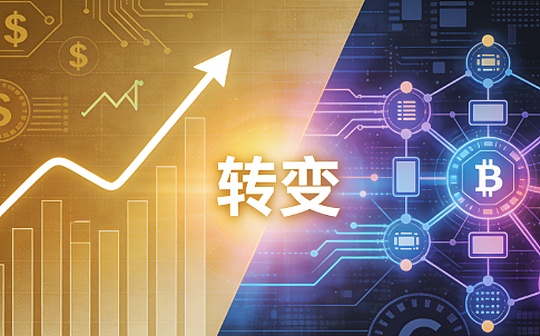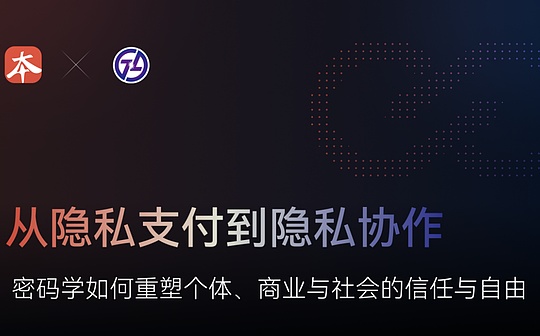
Source: Beosin
With the popularity of cryptocurrencies worldwide and the rapid growth of crypto users in Southeast Asia, on-chain capital flows in the region are becoming more frequent and complex.In order to gain an in-depth understanding of the flow characteristics of on-chain funds in Southeast Asia, potential financial risks and links to illegal industries,Based on the 10,000 blockchain address samples taken since 2020 (such as Southeast Asian personal wallet/Southeast Asian exchange users, etc.), Beosin conducted this in-depth analysis.By tracking and marking different types of risky capital flow paths, we find that the extent of risk involved in the circulation model of crypto assets exceeds expectations.This report not only reveals the risks of cryptocurrency use in Southeast Asia, but also explores the reasons behind the phenomenon from a macro level and makes relevant suggestions.
Overview of Southeast Asian cryptocurrency market
In recent years, the acceptance and popularity of cryptocurrencies in Southeast Asia have increased significantly.
As an emerging market, Southeast Asia has unique characteristics in terms of economic structure, policy environment and user behavior, and the following aspects are particularly obvious:
1. Rapid user growth:The proportion of young people in Southeast Asia is relatively high, and the popularity of mobile Internet has led to a rapid growth in the number of encrypted users in the region.It is estimated that there are tens of millions of crypto users in the region.
2. The demand for cross-border payments is strong:The number of cross-border workers in Southeast Asia is huge, and cryptocurrencies provide them with a convenient means of cross-border payment, so they are widely used.
3. Different regulatory environments:Southeast Asian countries have uneven regulatory policies for virtual currencies. Some countries support the legalization of cryptocurrencies, but most regions have not yet formed a clear regulatory framework, resulting in certain compliance risks in capital flows.
Sample analysis and main findings
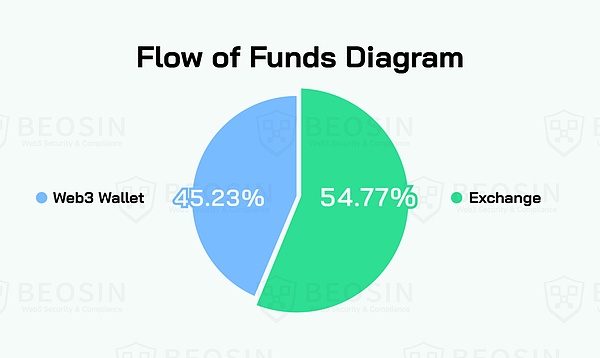 Chart: Schematic diagram of capital flow
Chart: Schematic diagram of capital flow
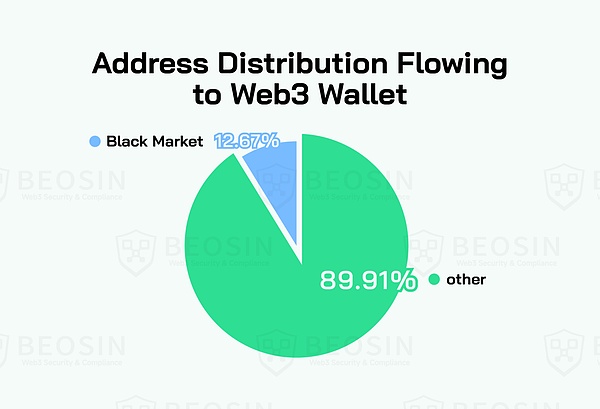 Chart: Address distribution flowing to Web3 wallet
Chart: Address distribution flowing to Web3 wallet
1. Free flow of funds
Of the 10,000 blockchain addresses analyzed this time, about 45.23% of the funds circulate freely on the public chain through decentralized wallets, showing high liquidity and decentralization characteristics.The total amount of free-flowing funds is as high as US$1.484 billion, indicating that decentralized transactions have become the mainstream among Southeast Asian users.
2. Relationship with the black and gray industry
Among these addresses, more than US$110 million of funds flowed directly to the black and gray industry-related addresses, accounting for more than 12%.After further tracking the capital flow of the remaining addresses, it was found that through secondary or multiple transactions, some addresses also had indirect connection with the black and gray industry, which increased the proportion of risk addresses related to the black and gray industry to 16.82%.This means that among the tens of millions of Southeast Asian crypto users, millions of users may have indirect or directly risk of financial transactions with the black and gray industry.
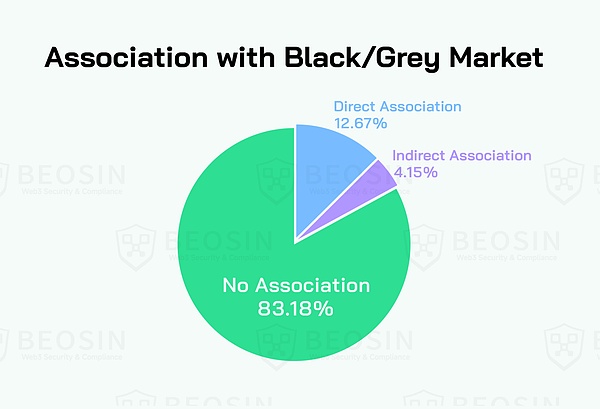 Chart: Relationship with the Black and Gray Market
Chart: Relationship with the Black and Gray Market
Analysis of capital flow and risk in black and gray industry
1. Types of black and gray industry addresses
Through risk tags, Beosin divides addresses closely related to the black and gray industry into 3 major categories and 44 minor categories. The high-risk categories involved mainly include:
●Coin mixing service: mainly used to anonymize capital flows
●Underground Money House: used for cross-border illegal fund scheduling and money laundering
●Fraud platform: involves false investment, Ponzi scheme, foreign market killing, pig-killing, etc.
Among these high-risk address types, more than 240 specific black and gray industry entities are involved.
2. High-risk capital flow phenomenon
Research results show that certain specific categories of capital flows are particularly significant:
●More than US$10 million of funds flowed directly into the relevant addresses of the underground bank, and the transaction frequency reached thousands of times.
●About US$11 million of funds flowed clearly to online gambling platforms.
●More than US$22 million of funds were imported into the fraud platform.
Such capital flows reveal the complexity and concealment of black and gray industry activities, especially under the anonymity and cross-border nature of cryptocurrencies, criminals can frequently transfer illegal funds and launder money.
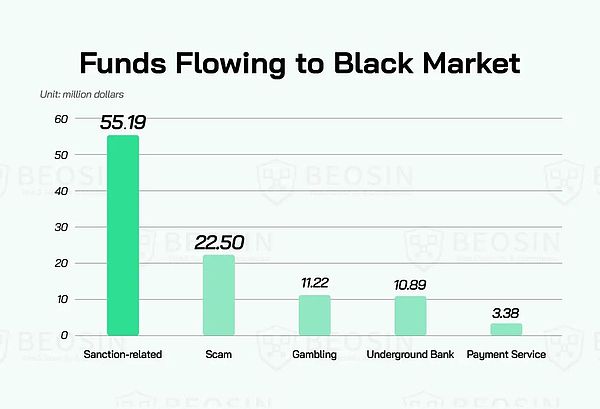 Chart: Funds flowing to the black market
Chart: Funds flowing to the black market
Fund inflows from sanctioned platforms
1. The proportion of funds inflows from sanctioned platforms
Of the funds directly related to the black and gray industry, about 53.49% flowed to the sanctioned platforms, and the number of related transactions was even twice that of the underground bank, with a total value of more than US$55 million, indicating that the sanctioned platforms are still the main inflow of high-risk funds.land.
2. Case analysis: Tornado Cash
As a commonly used currency mixing tool, Tornado Cash received more than $54 million in this study, accounting for 97.84% of all sanctioned platforms’ capital inflows.However, since the U.S. Treasury Department included Tornado Cash on the list of sanctioned entities in August 2022, its transaction volume has dropped significantly, showing an effective suppression of sanctions on its capital inflows.
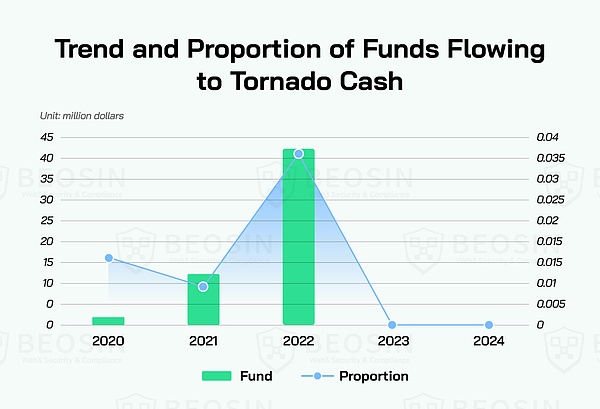 Chart: Trends and share of funds flowing to Tornado Cash
Chart: Trends and share of funds flowing to Tornado Cash
Macro-risk analysis and cause discussion
1. Cryptocurrency anonymity and high liquidity: The anonymity of cryptocurrencies makes it difficult to track illegal funds when flowing on the chain.Even if there are technical means to mark risk addresses, funds can still cover up the flow through technical means such as currency mixing, thereby facilitating money laundering activities.
2. Lack of regulatory system in Southeast Asia: cryptocurrency regulatory measures in Southeast Asian countries are still incomplete, resulting in an increase in the risk of cross-border flow of funds.Some regions still have a wait-and-see attitude towards cryptocurrencies and have not taken active regulatory measures, providing space for the flow of capital in the black and gray industry.
3. Social and economic environment: The economic development level of some Southeast Asian countries is low, and the gap between the rich and the poor is large, which has led to many scammers and online gambling using this place as a stronghold, mainly attracting foreigners to participate.
4. Technical supervision difficulty: Cryptocurrency exchanges, wallet service providers and decentralized platforms often find it difficult to effectively monitor and investigate the risks behind transactions due to technical and architectural restrictions.Decentralized platforms especially lack direct control over transaction data and cannot promptly identify risks such as malicious behavior or money laundering.Although some centralized platforms try to strengthen monitoring through KYC and AML measures, cross-chain transactions and anonymity technologies still complicate capital flow tracking and increase security risks.
Conclusions and suggestions
Analysis of on-chain capital flows in Southeast Asia shows that there are high security risks in the use of cryptocurrencies in the region.In order to effectively reduce the risk of illegal capital flows on the chain, Beosin recommends taking the following measures:
1. Strengthen regulatory mechanisms: Governments of all countries should formulate and implement complete cryptocurrency regulatory policies, crack down on illegal funding activities on the chain through cross-border cooperation, and introduce a clear virtual currency regulatory framework for different national conditions.
2. Improve user risk identification ability: Increase anti-fraud education for ordinary users, so that they can understand on-chain risks, and enhance their ability to identify and prevent funds in the black and gray industry.
3. Promote technological innovation: Actively develop and apply on-chain tracking and anti-money laundering technologies, and accurately identify and crack down on high-risk capital flows through big data analysis, artificial intelligence and other technical means.
4. Establish a multi-party collaboration mechanism: Encourage cryptocurrency exchanges, wallet service providers and related institutions in Southeast Asia to work together to strengthen information sharing and joint risk prevention, and improve on-chain security factor.
As one of the most promising regions in cryptocurrency development, Southeast Asia still faces the challenge of capital flow risks in the future.

